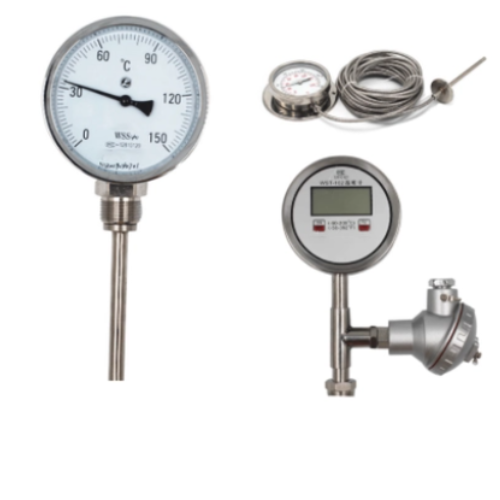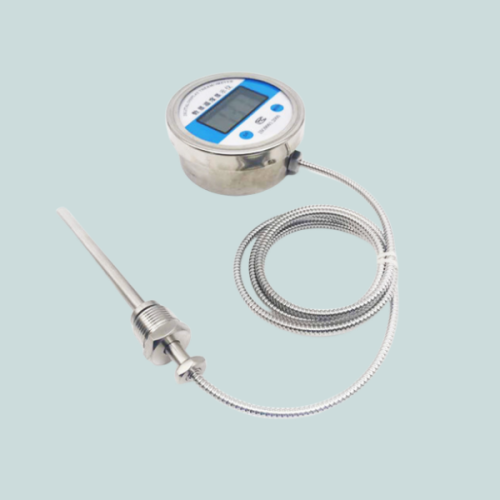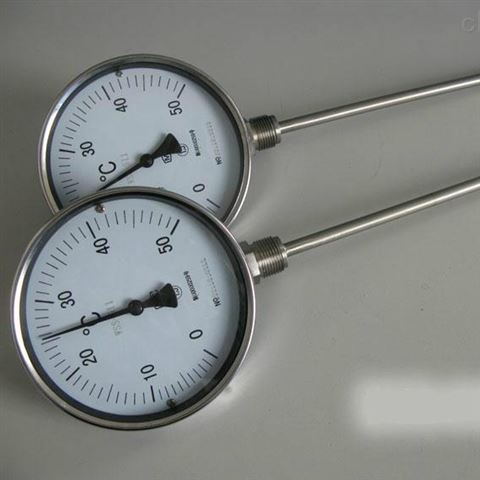BETTER TOUCH BETTER BUSINESS
Contact Sales at KAIDI.
The installation method of temperature transmitter instruments (usually referred to as primary instruments including thermocouples, thermal resistors, bimetallic thermometers, local displays, etc.) can be divided into four types according to the fixed form: flange fixed installation; Fixed installation with threaded connection; The flange and threaded connection are fixed and installed together; Simple protective sleeve insertion installation.

1. Flange installation is suitable for installing temperature primary instruments on equipment and medium and low pressure pipelines with high temperature and corrosive media. It has the characteristics of wide adaptability, corrosion prevention, and easy maintenance. There are generally five types of flanges in flange fixing methods: (1) flat welded steel flange HG 5010-58 (carbon steel), HG 5019-58 (stainless steel), (2) butt welded steel flange HG 5014-58 (flat butt welded flange), HG 5016-58 (concave convex face welding flange), (3) flat welded loose sleeve steel flange HG 5022-58 (4) rolled loose sleeve steel flange HG 5025-58 (copper), HG 5026-58 (aluminum), (5) flange cover HG 5028-58

2. Threaded connection fixation is generally suitable for installing multipoint-thermometer on pipelines without corrosive media. Refining departments also use this installation method on equipment according to customs, which has the characteristics of small volume and relatively compact installation. The installation of thermometers on pipelines with high strength pressure (PN22MPa, PN32MPa) adopts welded thermometer sleeves, which belong to the threaded connection installation form and have two forms: fixed sleeve and replaceable sleeve. The former is used for general media, while the latter is used for occasions that are prone to corrosion and wear and require replacement.
There are five types of threads in threaded connection fixation, including 1 ", 3/4", and 1/2 "in the English system, and M33 in the metric system × 2 and M27 × 2. Thermocouples often use 1 "or M33 × Fixed with 2 threads, there are also cases where 3/4 "threads are used, and in some cases, 1/2" threads are also used for fixation. Thermal resistors are often fixed with British pipe threads, with 3/4 "being more commonly used and some with 1/2" also used. The fixed thread of the bimetallic thermometer is M27 × 2. The fixed threads of pressure type thermometers are 3/4 "and M27 × Two types. G3/4 ″ and M27 × The outer diameter of the two is very close and can be screwed into 1 "2 buckles. Be careful to identify them during installation, otherwise if the thermometer joint (boss) is welded incorrectly, the thermometer cannot be installed.

3.The flange and threaded connection are fixed together, and when equipped with an additional protective sleeve, they are suitable for installation on pipelines and equipment with corrosive media.
4. The installation of a simple protective sleeve can be done in two forms: a fixed sleeve and a clamp type replaceable sleeve (with adjustable insertion depth), suitable for temporary detection of rod thermometers on low-pressure pipelines. Most temperature sensor transmitter measuring elements are installed on pipelines and equipment made of carbon steel, stainless steel, non-ferrous metals, lining or coating, and sometimes also on pipelines and equipment made of brick masonry, polyvinyl chloride, fiberglass, ceramics, sugar porcelain, etc. The installation method of the latter is greatly different from that of carbon steel or stainless steel pipelines and equipment, but it is basically the same as that of lined or coated equipment and pipelines, and the source components are also similar, which can be referred to.
We are here to help you! If you close the chatbox, you will automatically receive a response from us via email. Please be sure to leave your contact details so that we can better assist